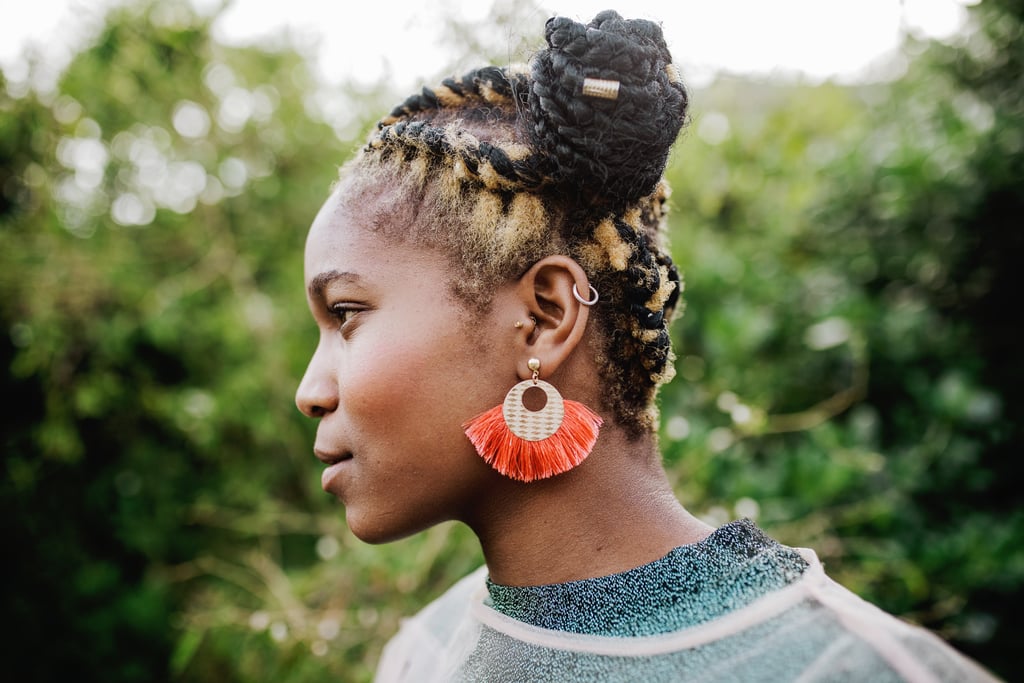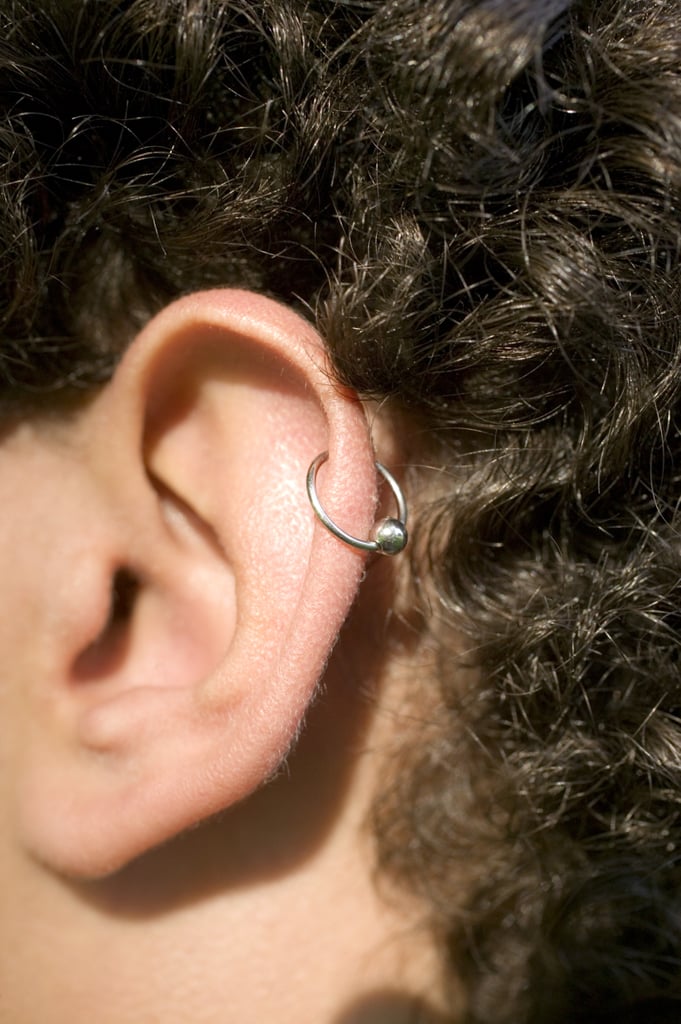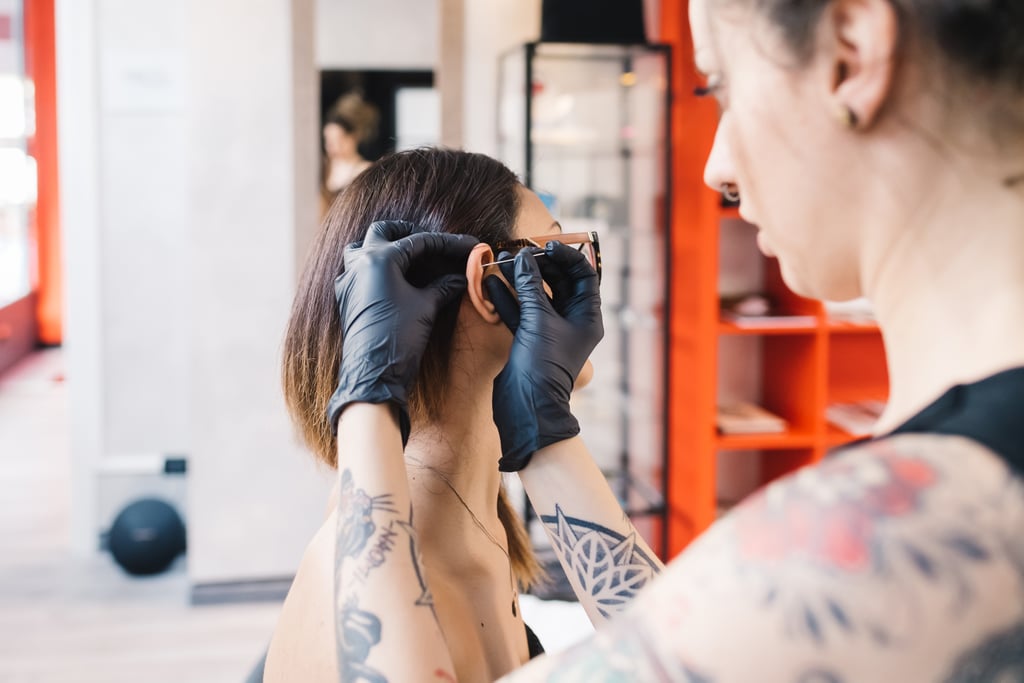Choosing where to get your next ear piercing [1] is a tough decision. Once you have your ear lobes pierced, the options get infinitely more complicated. Rook, tragus, helix, industrial, conch, anti-tragus – there are more types of cartilage piercings than we can keep track of and that doesn't even account for piercing trends [2], like constellation piercings [3].
To help you do some research before you book your appointment, Louisa Schneider, CEO and founder of Rowan [4], an at-home piercing company with registered nurses, answered all of the most commonly asked questions and told us everything you should know before getting your cartilage pierced, ahead.
What Are the Different Types of Cartilage Piercings?
"There are 12 different types of cartilage piercings [5]," said Schneider. "Tragus, anti-tragus, helix, snug, rook, daith, outer conch piercing, orbital, forward helix, industrial, auricle, and transverse lobe piercings."
Each cartilage piercing is located on a different part of the ear — hence its name. If you know the location you want to get pierced but don't know the proper terminology, the easiest way to find it is by doing a quick internet search and looking at a diagram of the ear.
How Bad Does a Cartilage Piercing Hurt?
With any piercing comes a little pain [6]. "Pain is relative, what hurts for one person may not hurt for the next," said Schneider. If you're nervous about the pain, there are options to help. For example, at Rowan, you can get the area numbed with Lidocaine to help alleviate pain.
What Is the Healing Time For Cartilage Piercings?
The healing time for any piercing [7] is widely dependent on the individual and the aftercare procedure followed. In general, cartilage piercings are harder to heal than lobe piercings. "All cartilage piercings generally heal in about six months, in comparison to lobe piercings which take around six weeks," said Schneider. "Cartilage piercings tend to be more sensitive and tender than lobe piercings, requiring extra care during the healing process."
Anyone who has ever had both an ear lobe piercing and a cartilage piercing knows this struggle all too well. Lobe piercings can feel like its healing itself; meanwhile, cartilage piercings have a tendency to put up a fight. This is because of two things: a lack of blood flow to that area of the ear and how much the piercing is irritated.
"The cartilage has an extremely limited blood supply so healing is slower and in contrast to the ear lobe," said Schneider, citing it can take anywhere from three to six months to heal for some people, or as long as six to 12 months for others.
Additionally, irritation is more likely with cartilage piercings. "For example, if it's on an area of the ear that led to constant irritation while you sleep or use earbuds, that will make the piercing harder to heal," she said. "Due to the long healing process, aftercare is crucial when piercing the cartilage."
What Types of Risks Are Associated With Cartilage Piercings?
Cartilage piercings can take anywhere from six months to a year to fully heal and the prolonged healing time makes it more susceptible to irritation and infection. "According to medical research, there is a higher complication rate associated with high ear or cartilage piercing," said Schneider. "The complications can result in poor healing, infection, and cosmetic deformity if an infection is not treated early and aggressively."
To lower your risk of infection, closely follow the aftercare steps your piercer gives you and note that you shouldn't remove your cartilage starter earring at all for the first six months. With patience and diligent aftercare, you shouldn't have any issues.


